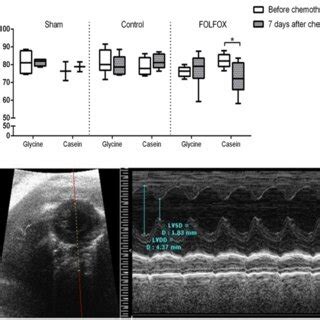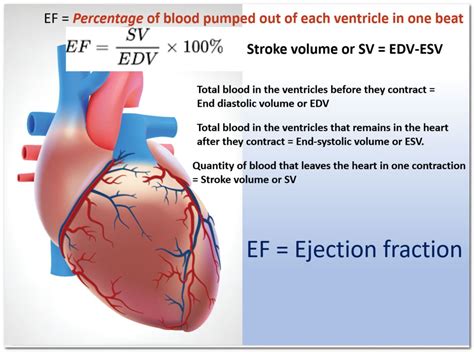lv fraction | biventricular ejection fraction lv fraction An ejection fraction of 60 percent means that 60 percent of the total amount of blood in the left ventricle is pushed out with each heartbeat. A normal heart’s ejection fraction is between 55 and 70 percent. This indication . Now that we understand why Louis Vuitton bags have red interiors let’s get back to our original question: do all LV bags have red interiors The short answer is no – not all LV bags have red interiors. While many classic LV bags like the Speedy and Alma do have red interiors, there are plenty of other styles that don’t.
0 · lvef fraction chemotherapy
1 · left ventricular volume fraction
2 · left ventricular fraction range
3 · left ventricular fraction mri
4 · left ventricular fraction chemotherapy
5 · left ventricular ejection fraction calculator
6 · how to calculate lvef
7 · biventricular ejection fraction
3333 Bristol St, Suite 2500, South Coast Plaza. 92626 Costa Mesa, United States. +1.714.662.6907. Online booking is currently unavailable, please check back at a later time. Directions. LOUIS VUITTON Official USA site - Discover our stores in Costa Mesa and find information about special services, product offer, opening hours.
Ejection fraction typically refers to the left side of the heart. It shows how much oxygen-rich blood is pumped out of the left ventricle to most of the body’s organs with each . An accurate left ventricle ejection fraction (LVEF) reading can be measured through a variety of imaging techniques. The most common ejection fraction testing measures include: Echocardiogram. An.
nike air max 90 geel wit
Left ventricular ejection fraction (LVEF) is the central measure of left ventricular systolic function. LVEF is the fraction of chamber volume ejected in systole (stroke volume) in relation to the volume of the blood in the ventricle at . A left ventricle (LV) ejection fraction of about 50% to 70% is categorized as normal. A mildly reduced LV ejection fraction is usually between 41% and 49%. A reduced LV ejection . An ejection fraction of 60 percent means that 60 percent of the total amount of blood in the left ventricle is pushed out with each heartbeat. A normal heart’s ejection fraction is between 55 and 70 percent. This indication .
Ejection fraction is simple to calculate; if the left ventricle contains 100 ml of blood at the end of diastole and 40 ml is pumped out during systole, then the ejection fraction is 40%. Thus, the ejection fraction is the stroke volume (SV) divided .
nike air max 270 - voorschools schoenen
Ejection fraction (EF) measures the amount of blood pumped out of your heart's lower chambers, or ventricles. It's the percentage of blood that leaves your ventricle when your heart contracts..Ejection Fraction (EF) is a percentage of blood pumped by the LV with each contraction. Many factors can affect ejection fraction including preload, afterload, and contractility. A normal EF ranges from 55-69%, and is calculated using the .Left ventricular ejection fraction (LVEF) has been a key variable for the diagnosis and management of heart failure over the last three decades. A normal heart’s ejection fraction is between 55 and 70 percent. This indication of how well your heart is pumping out blood can help to diagnose and track heart failure. It is important to note, however, that you can have a normal ejection fraction measurement and still have heart failure.
nike air max 270 zwart groen
Ejection fraction typically refers to the left side of the heart. It shows how much oxygen-rich blood is pumped out of the left ventricle to most of the body’s organs with each contraction. LVEF helps determine the severity of dysfunction on the left side of the heart.
An accurate left ventricle ejection fraction (LVEF) reading can be measured through a variety of imaging techniques. The most common ejection fraction testing measures include: Echocardiogram. An. Left ventricular ejection fraction (LVEF) is the central measure of left ventricular systolic function. LVEF is the fraction of chamber volume ejected in systole (stroke volume) in relation to the volume of the blood in the ventricle at the end of diastole (end-diastolic volume). A left ventricle (LV) ejection fraction of about 50% to 70% is categorized as normal. A mildly reduced LV ejection fraction is usually between 41% and 49%. A reduced LV ejection fraction is usually 40% or less. An ejection fraction of 60 percent means that 60 percent of the total amount of blood in the left ventricle is pushed out with each heartbeat. A normal heart’s ejection fraction is between 55 and 70 percent. This indication of how well your heart is pumping out blood can help to diagnose and track heart failure.
100. EF = ejection fraction.
Ejection fraction (EF) measures the amount of blood pumped out of your heart's lower chambers, or ventricles. It's the percentage of blood that leaves your ventricle when your heart contracts..

Ejection Fraction (EF) is a percentage of blood pumped by the LV with each contraction. Many factors can affect ejection fraction including preload, afterload, and contractility. A normal EF ranges from 55-69%, and is calculated using the following equation:Left ventricular ejection fraction (LVEF) has been a key variable for the diagnosis and management of heart failure over the last three decades.
lvef fraction chemotherapy
left ventricular volume fraction
A normal heart’s ejection fraction is between 55 and 70 percent. This indication of how well your heart is pumping out blood can help to diagnose and track heart failure. It is important to note, however, that you can have a normal ejection fraction measurement and still have heart failure. Ejection fraction typically refers to the left side of the heart. It shows how much oxygen-rich blood is pumped out of the left ventricle to most of the body’s organs with each contraction. LVEF helps determine the severity of dysfunction on the left side of the heart.
An accurate left ventricle ejection fraction (LVEF) reading can be measured through a variety of imaging techniques. The most common ejection fraction testing measures include: Echocardiogram. An.
left ventricular fraction range
Left ventricular ejection fraction (LVEF) is the central measure of left ventricular systolic function. LVEF is the fraction of chamber volume ejected in systole (stroke volume) in relation to the volume of the blood in the ventricle at the end of diastole (end-diastolic volume). A left ventricle (LV) ejection fraction of about 50% to 70% is categorized as normal. A mildly reduced LV ejection fraction is usually between 41% and 49%. A reduced LV ejection fraction is usually 40% or less. An ejection fraction of 60 percent means that 60 percent of the total amount of blood in the left ventricle is pushed out with each heartbeat. A normal heart’s ejection fraction is between 55 and 70 percent. This indication of how well your heart is pumping out blood can help to diagnose and track heart failure.
100. EF = ejection fraction.
Ejection fraction (EF) measures the amount of blood pumped out of your heart's lower chambers, or ventricles. It's the percentage of blood that leaves your ventricle when your heart contracts..Ejection Fraction (EF) is a percentage of blood pumped by the LV with each contraction. Many factors can affect ejection fraction including preload, afterload, and contractility. A normal EF ranges from 55-69%, and is calculated using the following equation:

nike air max 270 react sneakers multicolor
nike air max 90 geel wit
The LV-Transformer is a block added by IndustrialCraft 2 used to convert Medium Voltage (MV) to Low Voltage (LV), and back. It transforms 128EU/t to 32EU/t. Note that when using any Transformer, the 5-dotted side means higher voltage and the 1-dotted sides mean lower voltage. You can change the.
lv fraction|biventricular ejection fraction


























